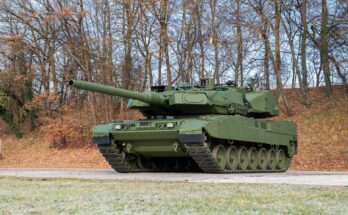With billions in proposed defense projects at stake India and Russia are jointly working on an approach allowing them to skirt the new U.S. sanctions enacted by Congress.
The financial sanctions related to the Countering America’s Adversaries through Sanction Act, or CAATSA, seeks to prevent countries from purchasing Russian weapons systems. This sanctions regime naturally has a knock-on effect for American allies who traditionally have conducted arms agreements and transfers with Moscow.
India is, of course, one of the largest such purchasers of Russian hardware. Since the early 1960s through today India has purchased nearly $65 billion worth of Russian armaments. Russian-sourced equipment predominates in the Indian military, with over 60 percent of total hardware of Russian origin. There are also at least four major projects together worth $12 billion in the Indian procurement pipeline.
Naturally Indian defense authorities are less than pleased with the U.S. State Department’s step on April 6 to notify 39 Russian entities – including state-run arms export giant Rosoboronexport and its bank subsidiary – that they were being placed under sanction. Under the regime any third party that conducts sizeable transactions with the individuals or entities outlined in the CAATSA is liable for punitive sanctions.
As a result, Indian banks with significant exposure to the U.S. are opting to suspend payments and installments to Russia, thus temporarily halting forward movement on existing deals. This in turn has led the Indian and Russian sides to devise a road map for circumventing the sanctions in order to push ahead on projects such as the delivery of five S-400 Triumf advanced air defense systems and the joint production of 200 Kamov-226T light utility helicopters.
There is hope on the Indian side that it will receive a waiver from CAATSA, as has been recently argued for by U.S. Defense Secretary Jim Mattis.
While the U.S. has superseded Russia in recent years as a preferred supplier of military-related hardware to India, the Indian side nonetheless seeks arms importation diversification as a means of preventing overreliance on a single source. With some $230 billion worth of arms procurements being pursued by New Delhi through 2027 and an inability of local industry to meet anywhere close to all the armed services military-technology needs, future procurement practices will hew to a multi-source strategy.
Despite Russia’s poor track record in terms of meeting delivery deadlines and a growing disenchantment amongst Indian service chiefs over Russian weaponry that often comes with maintenance and reliability issues, the Indian side is realistic about the need to maintain existing stocks of Russian-sourced hardware and the willingness of Moscow to assist in strategic defense projects (as in the case of the Arihant-class nuclear-powered ballistic-missile submarines).
Thus there will be no de-linking of Indo-Russia defense cooperation and trade on the horizon.
Dan Darling is Forecast International’s director of military and defense markets. In this role, Dan oversees a team of analysts tasked with covering everything from budgeting to weapons systems to defense electronics and military aerospace. Additionally, for over 17 years Dan has, at various times, authored the International Military Markets reports for Europe, Eurasia, the Middle East and the Asia-Pacific region.
Dan's work has been cited in Defense News, Real Clear Defense, Asian Military Review, Al Jazeera, and Financial Express, among others, and he has also contributed commentary to The Diplomat, The National Interest and World Politics Review. He has been quoted in Arabian Business, the Financial Times, Flight International, The New York Times, Bloomberg and National Defense Magazine.
In addition, Dan has made guest appearances on the online radio show Midrats and on The Media Line, as well as The Red Line Podcast, plus media appearances on France 24 and World Is One News (WION).




